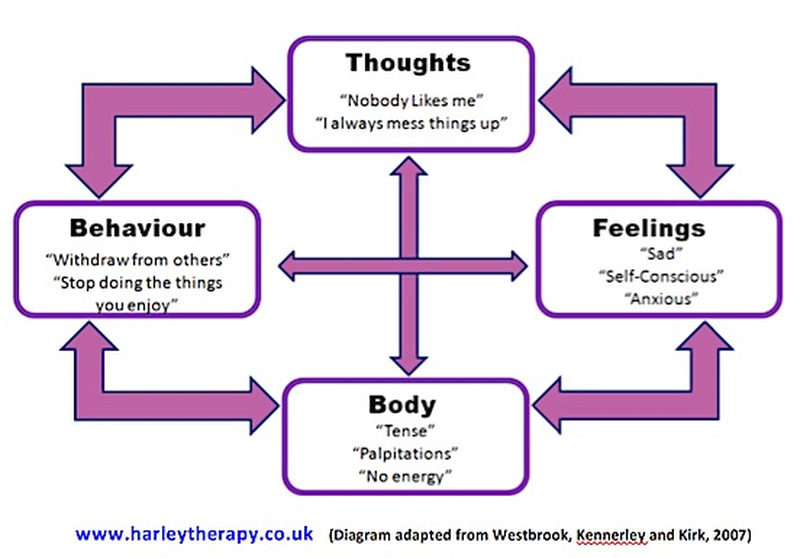New to This Edition
*Handouts and worksheets (available online and in the companion volume) have been completely revised and dozens more added--more than 225 in all.
*Each module has been expanded with additional skills.
*Multiple alternative worksheets to tailor treatment to each client.
*More extensive reproducible teaching notes (provided in the book and online), with numerous clinical examples.
*Curricula for running skills training groups of different durations and with specific populations, such as adolescents and clients with substance use problems.
*Linehan provides a concise overview of 'How to Use This Book.'
See alsoDBT® Skills Training Handouts and Worksheets, Second Edition, a spiral-bound 8 1/2' x 11' volume containing all of the handouts and worksheets and featuring brief introductions to each module written expressly for clients. Plus,Cognitive-Behavioral Treatment of Borderline Personality Disorder, the authoritative presentation of DBT. Also available: Linehan's instructive skills training videos for clients--Crisis Survival Skills: Part One,Crisis Survival Skills: Part Two,From Suffering to Freedom,This One Moment, andOpposite Action.
Distress Tolerance Handout 14: half-smiling and willing hands. Distress Tolerance Handout 14a: practicing half-smiling and willing hands. Distress Tolerance Handout 15: mindfulness of current thoughts. Distress Tolerance Handout 15a: practicing mindfulness of thoughts. Showing top 8 worksheets in the category - Dialectic. Some of the worksheets displayed are Open minded thinking, Dialectics 3 exercises, Dialectical behavior therapy skills modules part 3, Dialectical behavior therapy visual review graphics handouts, Dialectical behavior therapy in a nutshell, Sample chapter dbt principles in action acceptance, Self validation skills for use in dbt group. The Dialectical Behavior Therapy Skills Workbook, a collaborative effort from three esteemed authors, offers straightforward, step-by-step exercises for learning these concepts and putting them to work for real and lasting change. Start by working on the introductory exercises and, after making progress, move on to the advanced-skills chapters.
General Handouts - Orientation Handouts
General Handout 1: Goals of skills training
General Handout 1a: options for solving any problem
General Handout 2: overview - introduction to skills training
General Handout 3: guidelines for skills training
General Handout 4: skills training assumptions
General Handout 5: biosocial theory
Handout for Analyzing Behavior
General Handout 6: overview - analyzing behavior
General Handout 7: chain analysis
General Handout 7a: chain analysis, step by step
General Handout 8: missing links analysis
Handouts for Goals and Definitions
Mindfulness Handout 1:Goals of mindfulness practice
Mindfulness Handout 1a: Mindfulness definitions
Handouts for Core Mindfulness Skills
Mindfulness Handout 2: Overview Core Mindfulness skills
Mindfulness Handout 3: Wise mind: States of mind
Mindfulness Handout 3a: Ideas for practicing wise mind
Mindfulness Handout 4: Taking hold of your mind 'What' skills
Mindfulness Handout 4a: Ideas for practicing observing
Mindfulness Handout 4b: Ideas for practicing describing
Mindfulness Handout 4c: Ideas for practicing participating
Mindfulness Handout 5: Taking hold of your mind 'How' skills
Mindfulness Handout 5a:Ideas for practicing nonjudgmentalness
Mindfulness Handout 5b: Ideas for practicing one-mindfulness
Mindfulness Handout 5c: Ideas for practicing effectiveness
Handouts for Other Perspectives on mindfulness Skills
Mindfulness Handout 6: overview other perspectives on mindfulness
Mindfulness Handout 7: goals of mindfulness practice a spiritual perspective
Mindfulness Handout 7a: wise mind from a spiritual perspective
Mindfulness Handout 8: practicing loving kindness to increase love and compassion
Mindfulness Handout 9: skillful means balancing doing mind and being mind
Mindfulness Handout 9a: ideas for practicing balancing doing mind and being mind
Mindfulness Handout 10: walking the middle path finding the synthesis between opposites
Handouts for Goals and Factors that Interfere
Interpersonal effectiveness handout 1: goals of interpersonal effectiveness
Interpersonal effectiveness handout 2: factors in the way of interpersonal effectiveness
Interpersonal Effectiveness Handout 2a: myths in the way of interpersonal effectiveness
Handouts for Obtaining Objectives Skillfully
Interpersonal effectiveness handout 3: overview obtaining objectives skillfully
Interpersonal effectiveness handout 4: clarifying goals in interpersonal situations
Interpersonal effectiveness handout 5: guidelines for objectives effectiveness getting what you want DEAR MAN
Interpersonal effectiveness handout 5a: applying DEAR MAN skills to a difficult current interaction
Interpersonal effectiveness handout 6: guidelines for relationship effectiveness keeping the relationship GIVE
Interpersonal effectiveness handout 6a: expanding the V in GIVE level of validation
Interpersonal effectiveness handout 7: guidelines for self-respect effectiveness keeping respect for yourself FAST
Interpersonal effectiveness handout 8: evaluating options for whether or how intensely to ask for something or say NO
Interpersonal effectiveness handout 9: troubleshooting when what you are doing isnt working
Dialectical Behavioral Therapy Definition
Handouts for Building Relationships and Ending Distructive Ones
Interpersonal effectiveness handout 10: overview building relationships and ending destructive ones
Interpersonal effectiveness handout 11: finding and getting people to like you
Interpersonal effectiveness handout 11a: identifying skills to find people and get them to like you
Interpersonal effectiveness handout 12: mindfulness of others
Interpersonal effectiveness handout 12a: identifying mindfulness of others
Interpersonal effectiveness handout 13: ending relationships
Interpersonal effectiveness handout 13a: identifying how to end relationships
Handouts for Walking the Middle Path
Interpersonal effectiveness handout 14: overview walking the middle path
Interpersonal effectiveness handout 15: dialectics
Interpersonal effectiveness handout 16: how to think and act dialectically
Interpersonal effectiveness handout 16a: examples of opposite sides that can both be true
Interpersonal effectiveness handout 16b: important opposites to balance
Interpersonal effectiveness handout 16c: identifying dialectics
Interpersonal effectiveness handout 17: validation
Interpersonal effectiveness handout 18: a How To guide to validation
Interpersonal effectiveness handout 18a: identifying validation
Interpersonal effectiveness handout 19: recovering from invalidation
Interpersonal effectiveness handout 19a: identifying self-validation
Interpersonal effectiveness handout 20: strategies for increasing the probability of behaviors you want
Interpersonal effectiveness handout 21: strategies for decreasing or stopping unwanted behaviors
Interpersonal effectiveness handout 22: Tips for using behavior change strategies effectively
Interpersonal effectiveness handout 22a: identifying effective behavior change strategies
Emotion Regulation Handouts
Emotion Regulation Handout 1: goals of emotion regulation
Handouts for Understanding and Naming Emotions
Emotion regulation handout 2: overview understanding and naming emotions
Emotion regulation handout 3: what emotions do for you
Emotion regulation handout 4: what makes it hard to regulate your emotions
Emotion regulation handout 4a: myths about emotions
Emotion regulation handout 5: model for describing emotions
Emotion regulation handout 6: ways to describe emotions
Handouts for Changing Emotional Responses
Emotion regulation handout 7: overview changing emotional responses
Emotion regulation handout 8: check the facts

Emotion regulation handout 8a: examples of emotions that fit the facts
Emotion regulation handout 9: opposite action and problem solving deciding which to use
Emotion regulation handout 10: opposite action
Emotion regulation handout 11: figuring out opposite actions
Emotion regulation handout 12: problem solving

Emotion regulation handout 13: reviewing opposite action and problem solving
Handout for Reducing Vulnerability to Emotion Mind
Emotion regulation handout 14: overview reducing vulnerability to emotion mind - building a life worth living
Emotion regulation handout 15: accumulating positive emotions - shoft term
Emotion regulation handout 16: pleasant events list
Emotion regulation handout 17: accumulating positive emotions - long term
Emotion regulation handout 18: values and priorities list
Emotion regulation handout 19: build mastery and cope ahead
Emotion regulation handout 20: taking care of your mind by taking care of your body
Emotion regulation handout 20a: nightmare protocol - step by step
Emotion regulation handout 20b: sleep hygiene protocol
Handouts for Managing Really Difficult Emotions
Emotion regulation handout 21: overview managing really difficult emotions
Emotion regulation handout 22: mindfulness of current emotions letting go of emotional suffering
Emotion regulation handout 23: managing extreme emotions
Emotion regulation handout 24: troubleshooting emotion regulation skills - when what you are doing isnt working
Emotion regulation handout 25: review of skills for emotion regulation
Distress Tolerance Handouts
Distress Tolerance Handout 1: goals of distress tolerance
Handouts for Crisis Survival Skills
Distress Tolerance Handout 2: overview crisis survival skills

Distress Tolerance Handout 3: when to use crisis survival skills
Distress Tolerance Handout 4: STOP skill
Distress Tolerance Handout 5: pros and cons
Dialectical Behavioral Therapy Near Me
Distress Tolerance Handout 6: TIP skills - changing your body chemistry
Distress Tolerance Handout 6a: using cold water step by step
Distress Tolerance Handout 6b: paired muscle relaxation step by step
Distress Tolerance Handout 6c:effective rethinking and paired relaxation step by step
Distress Tolerance Handout 7: distracting
Distress Tolerance Handout 8: self soothing
Distress Tolerance Handout 8a: body scan meditation step by step
Distress Tolerance Handout 9: improving the moment
Distress Tolerance Handout 9a: sensory awareness step by step
Handouts for Reality Acceptance Skills
Distress Tolerance Handout 10: overview reality acceptance skills
Distress Tolerance Handout 11: radical acceptance
Distress Tolerance Handout 11a: radical acceptance factors that interfere
Distress Tolerance Handout 11b: practicing radical acceptance step by step
Distress Tolerance Handout 12: turning the mind
Distress Tolerance Handout 13: willingness


Distress Tolerance Handout 14: half-smiling and willing hands
Distress Tolerance Handout 14a: practicing half-smiling and willing hands
Distress Tolerance Handout 15: mindfulness of current thoughts
Distress Tolerance Handout 15a: practicing mindfulness of thoughts
Handouts for Skills When the Crisis is Addiction
Distress Tolerance Handout 16: overview when the crisis is addiction
Distress Tolerance Handout 16a: common addictions
Distress Tolerance Handout 17: dialectical abstinence
Distress Tolerance Handout 17a: planning for dialectical abstinence
Distress Tolerance Handout 18: clear mind
Distress Tolerance Handout 18a: behavior patterns characteristic of addict mind and of clean mind
Distress Tolerance Handout 19: community reinforcement
Distress Tolerance Handout 20: burning bridges and building new ones
Distress Tolerance Handout 21: alternate rebellion and adaptive denial
